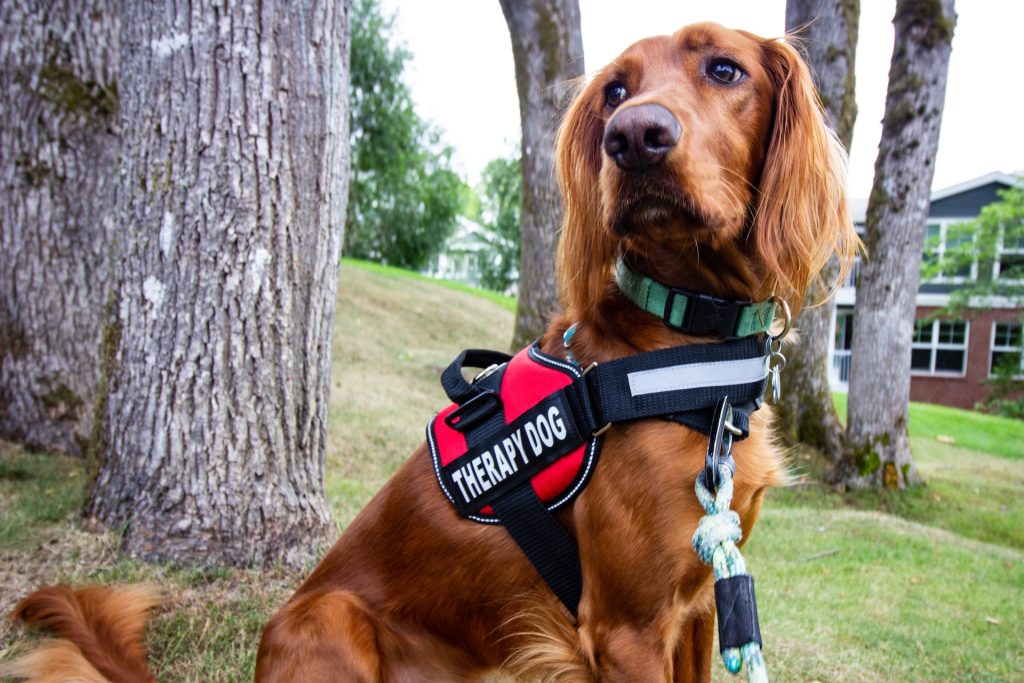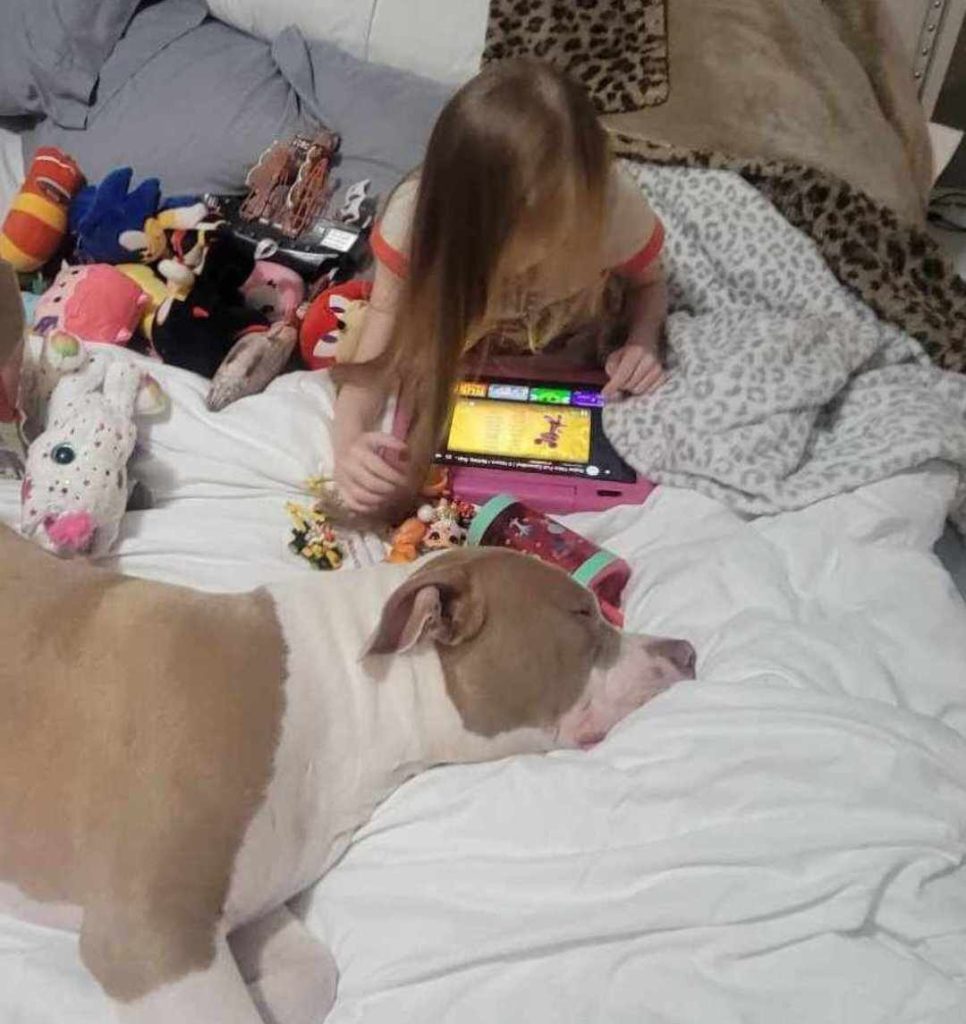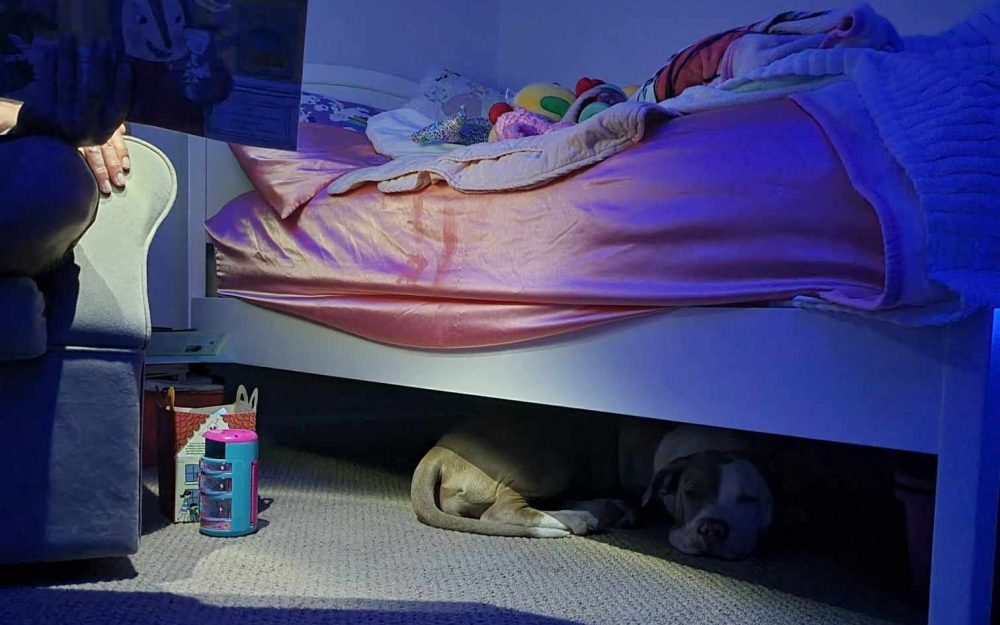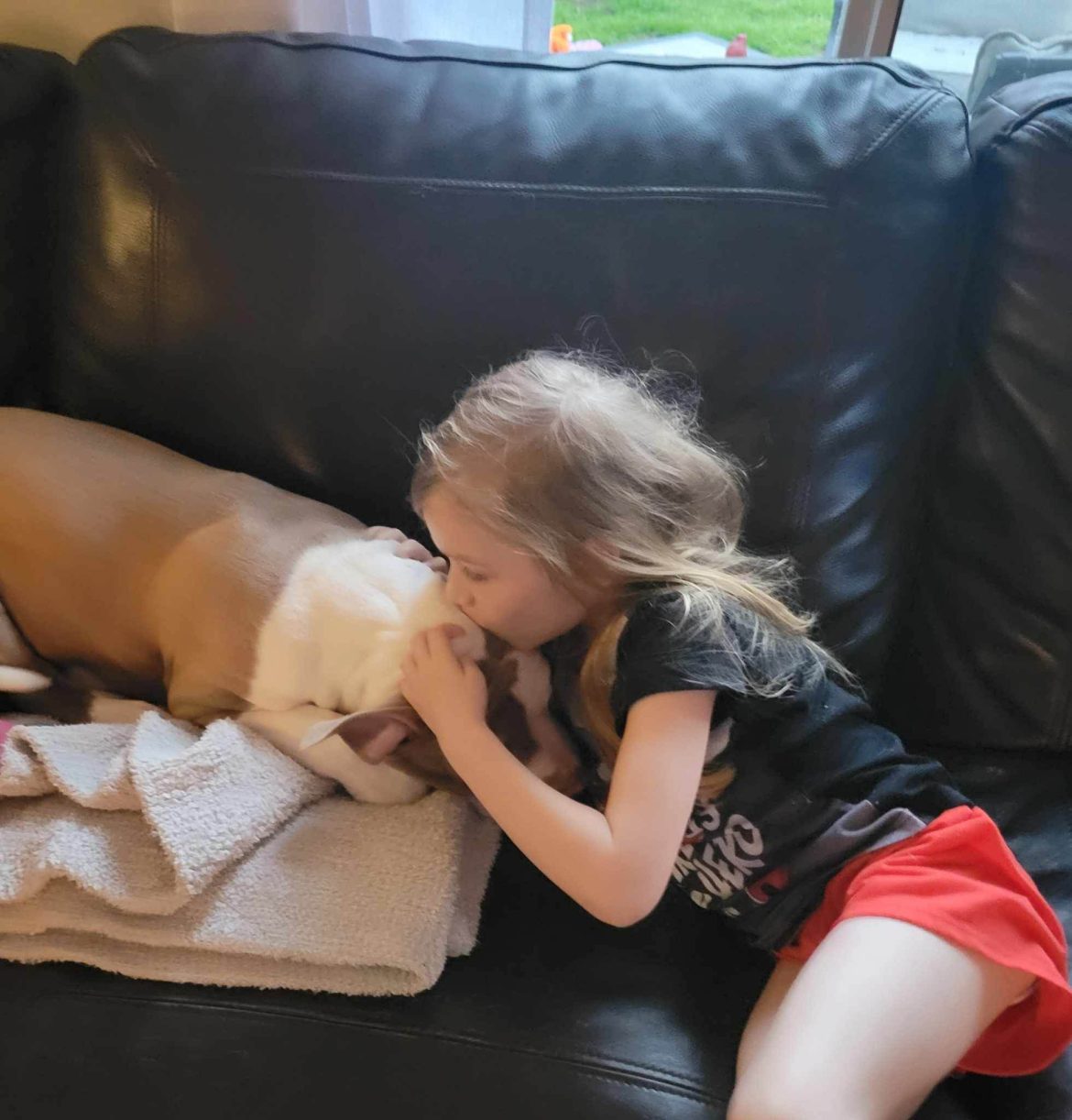Over the past 20 years, the United States has seen a considerable rise in the prevalence of Autism Spectrum Disorders. According to recent data by the CDC, “About 1 in 36 children has been identified with autism spectrum disorder (ASD) according to estimates from CDC’s Autism and Developmental Disabilities Monitoring (ADDM) Network.”
With this rise in diagnosis, we have also seen some of this century’s most amazing therapeutic developments. One such development is the rise of autism assistance dogs.
What is autism spectrum disorder?
Autism Spectrum Disorder (ASD) is a developmental disorder that affects communication, social interaction, and behavior. It is a spectrum disorder, meaning that it affects individuals differently and to varying degrees. Some common symptoms include difficulty with social interaction, repetitive behaviors or routines, and sensory sensitivities. It is typically diagnosed in early childhood and can be managed with therapy and support.
What are the 5 types of Autism Spectrum Disorder?
The five types of Autism Spectrum Disorder (ASD) are:
1) Autistic Disorder
Autistic Disorder, also known as Autism Spectrum Disorder (ASD), is a neurodevelopmental disorder that affects communication, social interaction, and behavior. It is a spectrum disorder, meaning that symptoms and severity can vary widely from person to person. Common symptoms include difficulty with social interaction, repetitive behaviors or routines, and difficulty with communication. It is typically diagnosed in early childhood and can be managed with therapy and support.
2) Asperger Syndrome
Asperger Syndrome is a developmental disorder that affects a person’s ability to socialize and communicate effectively with others. It is considered to be on the milder end of the autism spectrum and is often characterized by difficulties in social interaction, repetitive behaviors, and a narrow range of interests.
3) Pervasive Developmental Disorder-Not Otherwise Specified (PDD-NOS)
Pervasive Developmental Disorder-Not Otherwise Specified (PDD-NOS) is a type of autism spectrum disorder (ASD) that is characterized by delays in social interaction and communication skills. It is considered a milder form of autism but still affects a person’s ability to communicate and interact with others. Symptoms may include difficulty with social cues, repetitive behaviors, and sensory sensitivities.
4) Childhood Disintegrative Disorder
Childhood Disintegrative Disorder (CDD) is a rare condition that affects children between the ages of 2 and It is characterized by a significant loss of previously acquired skills, such as language, social skills, and motor skills. The cause of CDD is not fully understood, but it is believed to be related to abnormalities in the brain. Treatment typically involves a combination of therapy and medication.
5) Rett Syndrome.
Rett Syndrome is a rare genetic disorder that affects brain development, resulting in severe physical and intellectual disabilities. It primarily affects girls and is caused by a mutation in the MECP2 gene. Symptoms include loss of speech and hand movements, breathing problems, seizures, and scoliosis. There is currently no cure for Rett Syndrome, but treatment focuses on managing symptoms and improving quality of life.
What are the symptoms of ASD?
Now we take a quick look at some common characteristics of autistic disorder or ASD so that we can better understand why Autism Assistance Dogs are such a valuable asset. Below I have listed some of the common characteristics of ASD that the CDC has published. I encourage you to glance through the comprehensive list of ASD symptoms.
Examples of restricted or repetitive behaviors and interests related to ASD can include
- Lines up toys or other objects and gets upset when the order is changed
- Repeating a word or a phrase over and over (echolalia)
- Child playing with the same toys every time
- Fixating on specific parts of an object (for example, the wheels of a toy car)
- Getting upset because of minor changes
- Has obsessive interests
- Must follow certain routines
- Flapping hands, rocking body, or spinning oneself in circles
- Has unusual reactions to the way things sound, smell, taste, look, or feel
Most people with ASD have other related characteristics. These might include
- Delayed development of language skills
- Delayed mobility
- Delayed cognitive or learning skills
- Hyperactive, impulsive, and/or inattentive behavior
- Epilepsy or seizure disorder
- Irregular eating and sleeping habits
- Gastrointestinal problems (e.g. constipation)
- Irregular mood or emotional reactions
- Anxiety, stress, or excessive worry
- Extreme fear of the lack thereof.
Onto to the good part! You may be able to tell just by looking at these two lists some ways that a dog could make life a bit easier for someone who has these characteristics. But I bet there is something you don’t even know dogs could help with. To give you a real-world perspective allow me to introduce Stella.
What is are autism assistance dogs?

Autism spectrum disorder therapy dogs or autism assistance dogs are specially trained dogs that provide emotional support and assistance to adults and children with autism. Autism service dogs help with tasks such as calming anxiety, providing sensory input, and improving social skills. ASD dogs are trained to be patient, gentle, and responsive to their handler’s needs.
While any breed of dog can potentially be trained as an autism assistance dog, some breeds are more commonly used due to their temperament and trainability. These include Golden Retrievers, Labrador Retrievers, Standard Poodles, and Bernese Mountain Dogs.
But the list does not end there.
There are dog breeds that display the same qualities that are sort after in autism assistance dogs, and one of them is the good old American bully dog.
Can an American bully Dog become an ASD Dog?

Stella is a 7-month-old XL American Bully puppy. She was born in southern Louisiana in the home of Shane & Morgan Kearley of ManMade Kennels. Stella was born fortunate enough to become a therapy dog. She learned to interact with children while being raised by Shane & Morgan in their loving home, alongside their 14-year-old and 6-year-old daughters. As a pup, Stella was exposed to varying sounds, sights, smells, and textures from the moment she was born.
Shane and Morgan believe that early exposure helps the dog develop a gentle and non-reactive personality, exactly what Patricia McConnell outlines in her article, Therapy Dogs Born or Made?
Shane and Morgan believe that this is great value in any dog so they take pains to ensure that their puppies are exposed to as many new things as possible for the 8 short weeks they are in their home.
Now back to Stella. I think it important to mention that XL American Bullies, also known as American Pitbull Terriers by some registries, are a unique breed in that they take all of the things we love about pit bulls and make them larger and softer. Breeders are essentially trying to create a very sturdy, highly intelligent, and lovable couch potato. Well, Stella is all of that.
Stella met her girl Zoey on Christmas 2022. Stella was always intended to be a comfort dog for Zoey but it wasn’t until Stella’s new mom and dad, Kristi and Brennan, realized how intune Stella was to Zoey that they decided to try for a full-on therapy dog. Stella is already showing an amazing aptitude for the job.
Kristi describes Stella as “a large personal squishy”. Stella provides emotional and physical support to Zoey naturally without any formal training. Stella can sense heightened emotions and will walk over to Zoey and lie at her feet. When Zoey is having a difficult time with the plethora of ASD characteristics that she has, she uses Stella as a form of comforting stimulation through rubbing, squeezing, and petting.

Also, Stella sleeps under Zoey’s bed at night which is something she has done with no training. Finally, Kristi is training Stella to find the kids. Zoey is an identical twin and Kristi is training Stella to find them because Zoey is a flight risk. Once Kristi has Stella trained to find Zoey, she can be used to locate Zoey if she escapes from the home. This is a lifesaving ability as many children with ASD have gotten away from their homes and died either from exposure or drowning.
Kristi, Stella, and Zoey have an amazing therapeutic relationship that is increasing the quality of life for both Zoey and Kristi. This relationship showcases the amazing qualities that are being bred into the XL American Bully puppies of this generation. These dogs make amazing couch potatoes but they also have the innate ability to be so much more. These amazing dogs can save lives. If you would like more information on how you can start the process of owning an XL American Bully please reach out to ManMade Kennels.
However, it’s important to remember that each child’s needs and preferences are unique, so it’s best to work with a professional trainer to find the right dog for your family.
I am a highly skilled content writer and SEO expert with a passion for helping small businesses succeed in the digital world. With my extensive knowledge of the latest SEO techniques and strategies, I have successfully assisted numerous clients in improving their website rankings, generating more leads, and driving a significant increase in website traffic.
As a professional content writer and SEO expert, I am confident in my ability to contribute significantly to the success of small businesses. If you are seeking a results-driven, highly skilled digital marketer who can help you increase your ranking, convert new leads, and see a substantial improvement in website traffic, I would welcome the opportunity to collaborate with you.
Website: https://manmadewebsites.com/
Email: hello@digitalmarketingchap.com

